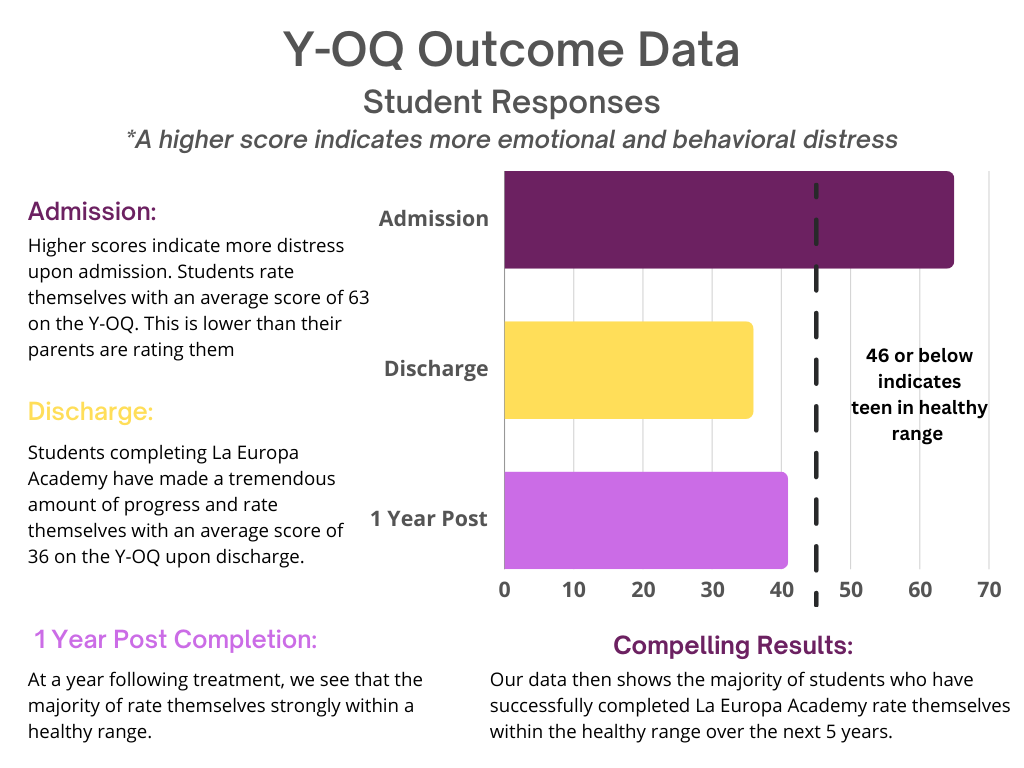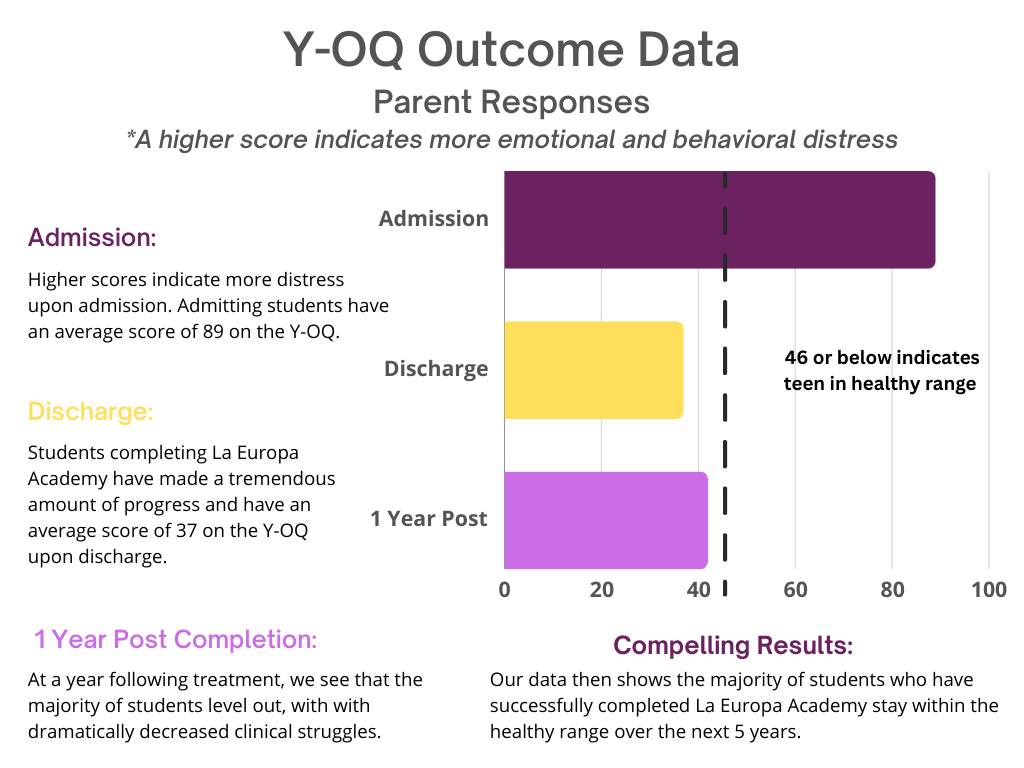OUTCOME DATA
Does Residential Treatment Work?
Families enrolling their teen at La Europa Academy sacrifice significant time, emotions, and finances in the healing journey. Occasionally we are asked, “How do you know it works?” This is a great question. Success is measured differently by different families. For some, symptom reduction is success. Still others see increased participation in academics as success.
La Europa Academy recognizes the need and responsibility to conduct appropriate research to ensure that our students are receiving the best possible treatment. La Europa Academy is proud to be designated research based programs through NATSAP (National Association of Therapeutic Schools and Programs). Currently we are actively participating in the NATSAP Outcome Research Project. A formal report of findings from the NATSAP Outcome Research Project can be viewed by clicking on this link:
Explore The Positive Outcomes of Residential Treatment
The National Association of Therapeutic Schools and Programs (NATSAP) recognizes recent report from the Manhattan Institute as a thoughtful and important contribution to the national conversation on youth mental health and residential treatment. This piece brings needed clarity to the benefits of residential programs while acknowledging areas that demand continued attention and progress. NATSAP supports the growing acknowledgement that residential treatment can and does change lives when delivered with care, oversight, and evidence-based practices. Thousands of families have experienced meaningful healing through therapeutic schools and programs, and this report validates the need to protect and improve those services—not dismantle them.
Our main outcome measure is the Youth Outcome QuestionNaire (Y-OQ). The Y-OQ® SR 2.0 is a bi-product of one of the most researched outcome measures for youth in the world, and has been the subject of many studies worldwide. The Y-OQ uses a series of questions to measure the effectiveness of therapeutic treatment. It is designed to reflect the total amount of distress a teen is experiencing. Questions include information about a teen's decision making skills, interpersonal relationships, clinical issues, emotional regulation and mental health history. A higher score indicates more emotional and behavioral distress. A score at or below 46 is withing the healthy range.
We ask both parents and their teens to complete the Y-OQ upon admission to our residential programs. While a teen is enrolled at La Europa Academy, they will complete the YOQ on a regular basis. We then ask both parents and teens to complete it upon discharge/graduation, and again at 12 months post graduation. We have been collecting data since 2007 and now have thousands of data points.

